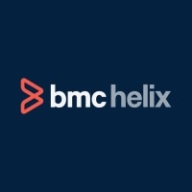

BMC Cloud Lifecycle Management and Sumo Logic Observability compete in enterprise IT solutions. BMC leads in pricing and support, while Sumo Logic offers a robust feature set and data monitoring solutions.
Features: BMC Cloud Lifecycle Management includes advanced provisioning, policy-driven governance, and automation ideal for complex cloud environments. Sumo Logic Observability excels with real-time data analytics, machine learning-driven insights, and scalability for large data operations, making it a preferred choice for data-driven organizations.
Room for Improvement: BMC Cloud Lifecycle Management could enhance its scalability and flexibility, reduce a steep learning curve, and improve integration capabilities. Sumo Logic Observability might benefit from simplifying its query language, streamlining the learning process, and reducing the initial setup costs.
Ease of Deployment and Customer Service: BMC Cloud Lifecycle Management provides a structured deployment model beneficial for those needing defined processes. Sumo Logic offers rapid deployment and flexible integrations, appealing to dynamic environments seeking quick implementation and adaptability.
Pricing and ROI: BMC Cloud Lifecycle Management provides competitive pricing with strong ROI for cost-focused enterprises. Sumo Logic Observability's initial setup costs might be higher, but its extensive feature set can lead to substantial data-driven returns and greater long-term ROI potential.
| Product | Market Share (%) |
|---|---|
| Sumo Logic Observability | 0.3% |
| BMC Cloud Lifecycle Management | 0.3% |
| Other | 99.4% |

BMC's cloud management platform drives digital innovation with agile, full-stack service provisioning across cloud and traditional platforms. BMC Cloud Lifecycle Management scales easily while integrating with essential compliance and governance policies to reduce risk.
Sumo Logic Observability offers advanced monitoring solutions with features like integrated dashboards and querying capabilities, though presents a learning curve compared to alternatives. Designed for efficient log aggregation and analysis, it provides near-real-time updates facilitating improved incident resolution.
Sumo Logic Observability stands out with its ability to unify teams through a single platform, offering features that include customizable dashboards and valuable apps. It provides powerful log tracing and centralized management, designed for organizations focused on log aggregation, analysis, and expanding SIEM capabilities. While it has a steeper learning curve compared to some competitors, it excels in tailored integrations that enhance log searches. Users find themselves able to monitor, automate, and centralize log repositories for effective debugging. Despite its strengths, improvements in data enrichment and documentation organization are needed as current query functions can be slow, impacting efficiency. Users have also mentioned needing pre-built dashboards and better tab management for enhanced functionality. Cost management remains a notable consideration for users evaluating Sumo Logic Observability.
What features make Sumo Logic Observability effective?Sumo Logic Observability is implemented across industries predominantly for managing and analyzing extensive data sets, offering capabilities critical for SIEM activities and security examinations. By facilitating quick data visualization and transaction tracking, organizations in sectors such as finance, healthcare, and technology benefit from its robust framework to support infrastructure logging and large-scale data management, contributing to effective monitoring and system operations.
We monitor all Cloud Monitoring Software reviews to prevent fraudulent reviews and keep review quality high. We do not post reviews by company employees or direct competitors. We validate each review for authenticity via cross-reference with LinkedIn, and personal follow-up with the reviewer when necessary.